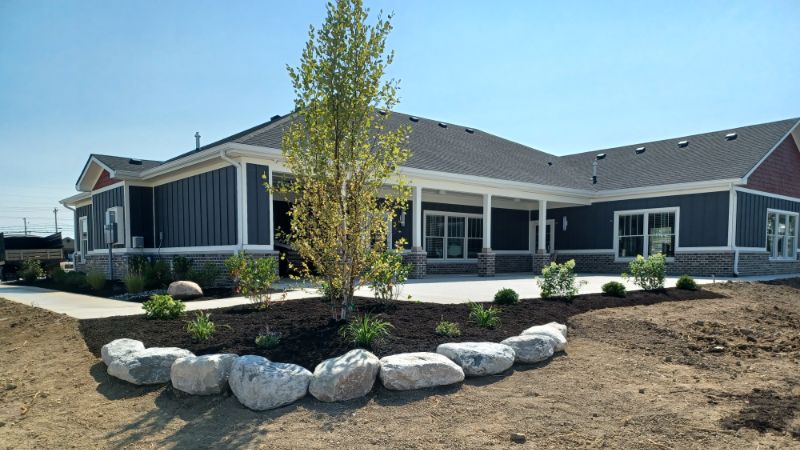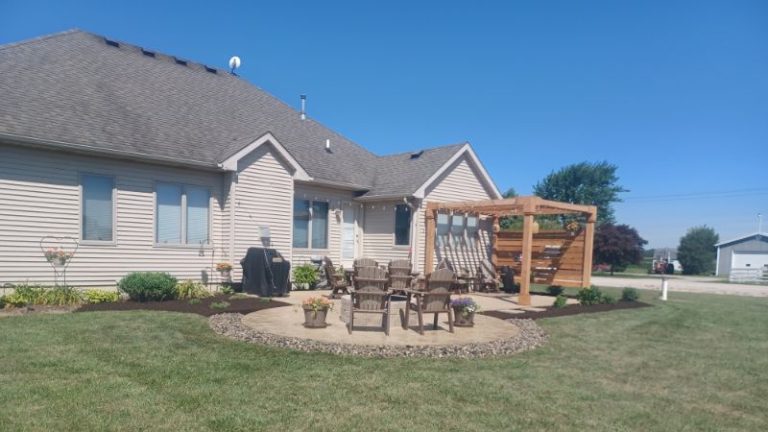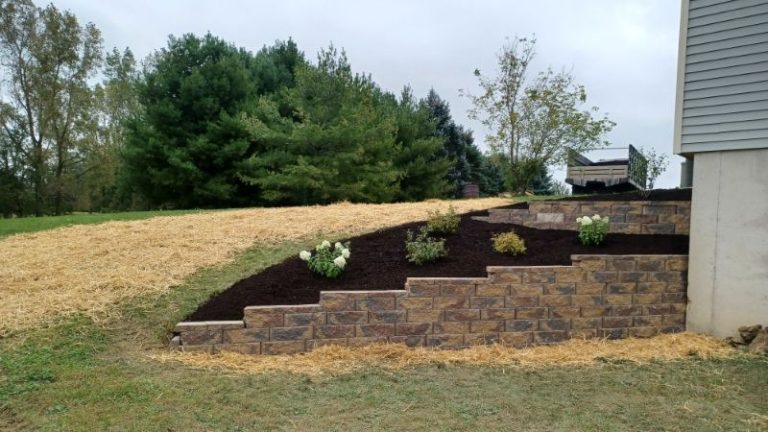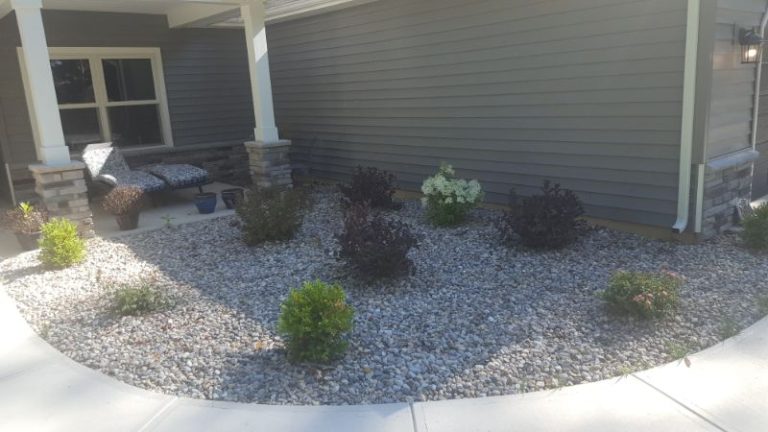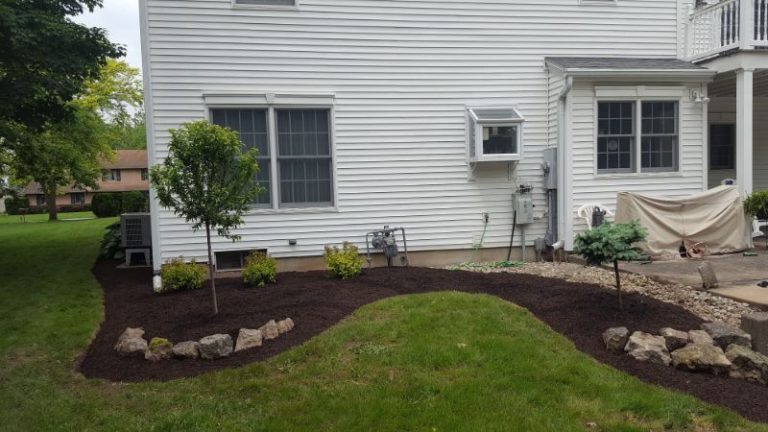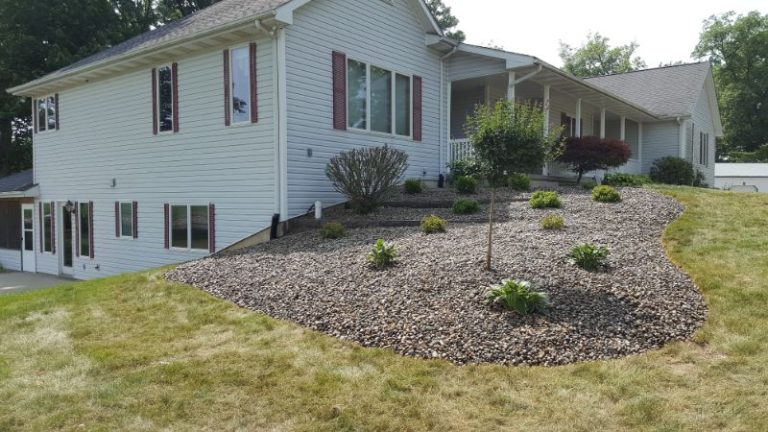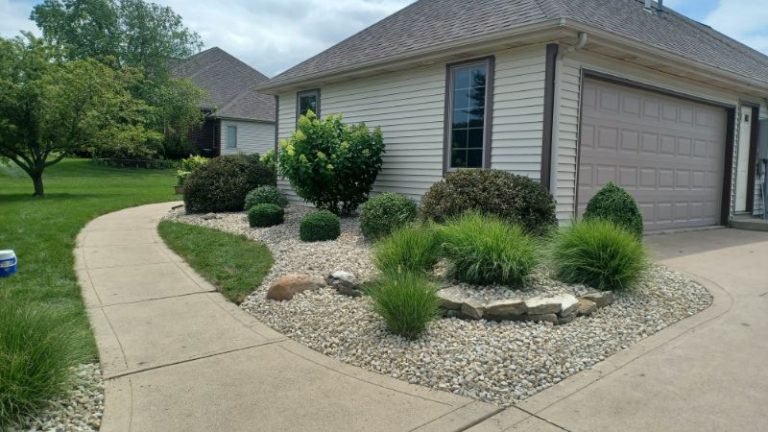How to Landscape with Rocks & Natural Stones
Rocks and natural stones can do so much to enhance the look of your landscape and solve many everyday landscaping needs. Unlike some trees/shrubs/plants, they look the same year-round, help with stabilization and retainment, and are nature’s sculptures. We’ve put together some information about some of the many different types of rock and stones out there and how to use them in your landscape design.
THE PROS
- Longevity is one of the biggest perks of adding stone/rock to your landscape. It will last your lifetime and likely longer.
- Stone, rock, gravel it’s all incredibly durable. Which also happens to make it reusable. Unlike other elements like plants and wood, which can break or die if moved, you can rearrange, restack, or reset rocks and stone if needed.
- Thanks to the many varieties, combinations are practically limitless. There are so many sizes, shapes, and colors to choose from that they work with all design styles.
- Installing stone or rock is one of the best low-maintenance options out there. Once in place, they require little to no attention.
- A smart and easy addition for homeowners trying to achieve a more natural-looking landscape.
THE CONS
- The initial expense of installing rock is more than other popular landscape materials, primarily due to trucking, machinery, and labour costs. However, long term, it typically saves money because of its longevity and durability.
- The more elaborate and detailed the design, the higher the quality of masonry required. This can add to your overall costs and create a challenge since not every region has expert masons.
- Depending on the size of the boulders, your project may need huge heavy-duty machinery. Bigger machinery costs more to hire but may also have difficulty accessing your yard. If fences need to be moved or other accommodations are made, your budget and timeline may be affected.
TYPES OF STONES & HOW TO USE THEM
Gravel
There are many different varieties of gravel, but there are a few kinds that are the most popular. Gravel can be used in landscape design for many reasons, from solving drainage problems to adding texture to your overall aesthetic. To keep it lower maintenance, you will want to install landscape fabric underneath to help suppress weeds and prevent the rock from sinking into the ground. Decomposed granite (DG), a powdery texture made up of silt and tiny pebbles from weathered granite, creates a more rustic look with its golden/reddish tan hue. It’s often used for patios and pathways or as topdressing around trees and plants. Crushed stone is medium-sized gravel where individual pieces of rock are typically 1 ½ to 1 ¾ inches in diameter. It is also used for walkways and patios and is the most popular choice for driveways. The grey color and rougher texture bring a more natural-looking stone look to your landscape design. Similar in size to crushed stone, river rocks are polished to give them a smooth surface, making them perfect for ponds and other water features. They are also an attractive choice for garden borders and dry creek beds. Pea gravel is tiny pieces (approximately ¼ to ½ inches) of round gravel. It works well for garden pathways, filling the gaps between other, more prominent stones such as flagstone, creating an easy-to-rake zen garden, and as an addition to a rock garden.
Fieldstone
As the name implies, fieldstones are collected from open fields or, more specifically, from the ground’s surface. No excavation, mining, or quarries are needed. The majority of the fieldstone in your area will likely be local, making it easy for the rock to look like it was always there. They can be used to build outdoor fireplaces, patios, pathways, walls, and garden bed edging. Fieldstone is primarily composed of limestone, granite, and sandstone, with each lending a different color to the stones from brown to gray to red.
Flagstone
Flagstone that has been excavated and then split along their naturally occurring fissures is a favourite material for creating all sorts of outdoor gathering spaces. Some popular examples include patios, steps, seating, retaining walls, pathways, and firepits. The pieces are wide with irregular edges and come in different thicknesses (for different types of installation). They can be set on a bed of sand with the joints filled with gravel for a more laid-back feel, but if you want a longer-lasting, more classic flagstone look, that means setting the stone in concrete and motoring the joints — a job best left to professionals.
Boulders
A boulder is typically at least 10 inches across, making it relatively large. It can be smooth or ragged, round or flat, but the size sets it apart from the average rock. (Big boulders can be used as a stand-alone focus feature in your yard, especially when paired with landscape lighting. They also work well as retaining walls, large-scale water features, seating, accent pieces in a garden or yard, and fire pits.
INSTALLATION TIPS
- Keep a rake handy to level out rock used for walkways and patios.
- Use edging to keep rock in place. Options vary from budget-friendly to pricey and can include metal, wood, stone, concrete, brick, or even plastic.
- Before choosing your rock, make sure to consider how you will use the area. Some stone is better for walking on than others, and some make it impossible to drag a garbage can across.
- Look at pictures to decide how to place the stones, especially if they are on the larger side. Some, like fieldstones, will look more natural if they are buried halfway into the soil or more human-made when flat stones are stacked like brick.
- Some projects will require the use of mortar to bind your rocks together. It will depend on the purpose and look you are after.
- Professionals best install certain stone and rock installations, so make sure to do your research before attempting any DIY projects. For example, flagstone will crack if placed directly on the ground and walked on.
- Rock and stone are relatively low-maintenance, but you will want to stay on top of the weeding since the rock makes it difficult to get to the root of the problem. A leaf-blower is the best tool to remove seasonal debris from sticking around.
- Look for local or indigenous rocks and stones whenever possible. They will look like they fit in with your surroundings and cost less than having a more exotic type of rock trucked or shipped to you.
- The transportation fees are the most significant expense when ordering rock. To cut down on the cost, pick up your order if you have something to move it in or make sure you fill your order as much as possible (for example, avoid doing two half loads).
- Rocks, especially boulders, tend to exist in groups of different shapes and sizes. The way you arrange your rocks and stones will influence the beauty of the composition
If you’re looking for a landscaper who can create a timeless and durable landscape by incorporating rock and natural stone into your space, please call Mast Outdoor Services LLC at 260-820-3253 or fill out our online contact form.

